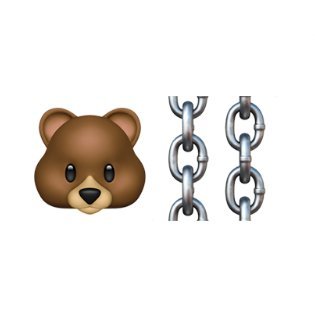Noch einmal: Was kommt als Nächstes für DeFi aus der Sicht des OKX Web3-Produktmanagers?
Four years have passed since the DeFi Summer of 2020. Today, we are re-examining DeFi and exploring its next step.
As a once important growth flywheel of the Krypto market, DeFi seems to have been silent in the past two years.
Although new exchanges emerging on Ethereum Layer 2 are vigorously attracting liquidity, and old DeFi protocols MakerDAO and Unichain are also making some adjustments. However, these innovations are mostly biased towards business transformation/adjustment, and are not mixed with technology and model innovation.
As a Web3 super portal that receives traffic, the OKX Web3 wallet focuses more on how to improve user experience and help users play in the on-chain world with a low threshold. Therefore, this article aims to explore the DeFi form and its next development in the eyes of the OKX Web3 product manager.
DeFi market overall situation and user portrait
The popularity of the DeFi track has declined in 2024, especially after the LSD and Pendle craze in the first half of the year, the market has gradually calmed down and lacks new narrative drivers. However, from the beginning of the year to date, the LSD and LRT tracks have maintained strong growth, especially the re-staking projects represented by EigenLayer, which has driven the LRT track to bring nearly $20 billion in incremental value to DeFi. At the same time, the yield market led by Pendle has also performed well, with its market value increasing nearly fourfold since the beginning of the year, with Pendle contributing most of the increase.
In addition, the total locked value (TVL) of the RWA track has doubled since the beginning of the year, with private lending, treasury tokenization, and the entry of traditional financial institutions as the main driving forces. BTCFi was driven by the inscription narrative. Developers are committed to activating BTC funds and users by implementing smart contract-like functions on the BTC mainnet, further building the DeFi ecosystem, and bringing a new wave of growth.
The total locked value of the current DeFi market has climbed from $50 billion at the beginning of the year to $120 billion, and has now fallen back to about $80 billion. The LSD track still occupies the largest market share, followed by lending and DEX.
At the beginning of this year, the total locked value (TVL) of the DeFi market was US$50 billion, then climbed to a maximum of US$120 billion, and has now fallen back to about US$80 billion. The LSD track occupies the largest market share, followed by lending and DEX.
At the user level, current DeFi users are mainly divided into the following categories:
1. Crypto native ordinary users: Their main demand is more on-chain interest-earning channels, such as earning income through stablecoins; while advanced users pursue more complex DeFi strategies and build nesting dolls to obtain higher returns.
2. Institutions such as on-chain DAOs: These users focus on treasury management and stable returns, and prefer low-risk basic DeFi protocols, especially RWA and other interest-earning channels that bring off-chain assets (such as US Treasuries) into the chain.
3. Traditional financial institutions: They gradually realize the efficiency and composability advantages of DeFi, and begin to look for more distribution channels by on-chain traditional assets.
4. Users who are not familiar with DeFi: Although these users are interested in higher-yield opportunities on the chain, the barrier to entry into DeFi is high and they need guidance from a Führung.
Users who are suitable for participating in DeFi usually have a certain risk tolerance and strong learning ability, especially those who have a certain understanding of the on-chain ecology and crypto assets and are eager to explore in depth are active in DeFi.
DeFi risks and common sources of income
The main risks currently facing the DeFi field include the following:
1. Security of the underlying smart contracts of the protocol: This is the biggest risk in DeFi. Smart contract vulnerabilities may lead to protocol attacks and theft of funds.
2. Project party reputation risk: The project party may run away (rug pull) and other situations, affecting the security of user funds.
3. Regulatory risks: As DeFi scales up, the attention of governments and regulators around the world increases, and it may face stricter regulatory requirements in the future, involving compliance issues such as KYC and AML.
4. Liquidity risk: DeFi protocols rely on liquidity providers, and any sudden withdrawal of liquidity (such as whale behavior) may cause market imbalances, increase transaction costs or trigger liquidations.
5. Markt Risiko: Many DeFi platforms rely on other mainstream cryptocurrencies, such as Ethereum, for their functionality. The prices of these assets may be highly volatile, causing losses to users, and in serious cases, may have a significant impact on the DeFi ecosystem. In addition, DeFi popularity often changes rapidly, and users need to keep up with the hot spots and adjust their positions in real time, otherwise they may miss out on high-yield opportunities.
As for common sources of income and common risks, DeFi has multiple underlying sources of income, such as providing liquidity as an LP in Dex to earn transaction fees; providing loanable assets in lending agreements to earn loan interest; the income of Staking, LSD and LRT comes from staking rewards, such as Ethereum PoS income, as well as project tokens and points; for Perp perpetual contract LP (such as GLP, JLP), the income comes from the transaction fees or funding rates of the counterparty; finally, RWA (real world assets) income comes from off-chain traditional assets, such as returns on US Treasury bonds or real estate. In addition, many DeFi project parties will give additional project token rewards to liquidity providers and token rewards to partners.
In general, the higher the risk, the higher the return. Basic lending protocols and staking are relatively safe, but the yield is low; more complex operations such as LP in DEX V3 require real-time dynamic adjustment of the market-making range. Although the return is higher, the risk is also increased accordingly. Therefore, when trading, you should pay attention to choosing the target that matches your risk tolerance.
At present, OKX Web3 has taken certain measures in terms of security. We believe that the security of DeFi projects is the key to their large-scale popularization. OKX DeFi will conduct a full investigation before accessing a new protocol. The BD team is responsible for evaluating the background of the project party, and the technical team is responsible for in-depth review of the smart contract to ensure that there are audit reports and other guarantees. As a DeFi aggregator, the OKX DeFi platform only accesses protocols that have been verified for security, and the platform will not host user funds. It only serves as a bridge for users to participate in DeFi with one click. In addition, OKX DeFi also provides users with an additional layer of income, which comes from subsidies from the project party and will not be distributed directly to users through the OKX platform, further reducing financial risks.
OKX DeFi product status and development direction
At present, RWA (real world assets) may become a potential growth point for DeFi. As traditional assets such as real estate, bonds, and stocks are gradually introduced on-chain, higher liquidity and returns can be achieved through DeFi protocols. In 2024, more institutions will pay attention to the combination of RWA and DeFi, which will bring more funds and opportunities to the DeFi ecosystem. At the same time, institutional investors interest in DeFi continues to increase, especially in areas such as stablecoin lending and yield products, prompting more traditional financial institutions to explore ways to participate in the DeFi market. The involvement of institutions will promote the DeFi market to be more mature and standardized, and bring more capital inflows and more stable yield products.
In addition, CeDeFi brings innovative products by combining CeFi and DeFi, such as Ethena, a solution that combines yield-generating stablecoins; while the BTCFi field has seen the emergence of innovative BTC-based Staking protocols and their derived upstream LSD ecosystems, such as Babylon.
OKXs DeFi products are mainly focused on building a one-stop DeFi aggregator. Users can participate in various DeFi protocols across the entire network through the OKX platform, making position management more convenient. OKX not only helps users filter the risks of most protocols, but also does not escrow user funds. It also provides users with an additional income layer outside the DeFi protocol official website to increase trading returns. In addition, OKX is also designing exclusive DeFi strategy products, aiming to help users obtain higher returns through the teams professional capabilities.
OKXs DeFi development plans in the future include: creating the best one-stop DeFi revenue aggregator in the entire network, aggregating the DeFi protocols of all mainstream public chains, and supporting emerging hot projects to provide more early revenue opportunities; launching a powerful DeFi dashboard to display the positions and PnL of the entire network; and through the strategies of professional teams, productizing complex DeFi strategies, simplifying the trading process, and facilitating more users to participate in the world of DeFi.
Haftungsausschluss
Dieser Artikel dient nur als Referenz. Dieser Artikel gibt nur die Ansichten des Autors wieder und stellt nicht die Position von OKX dar. Dieser Artikel soll (i) keine Anlageberatung oder Anlageempfehlungen; (ii) kein Angebot oder keine Aufforderung zum Kauf, Verkauf oder Halten digitaler Vermögenswerte; (iii) keine Finanz-, Buchhaltungs-, Rechts- oder Steuerberatung darstellen. Wir übernehmen keine Garantie für die Richtigkeit, Vollständigkeit oder Nützlichkeit dieser Informationen. Das Halten digitaler Vermögenswerte (einschließlich Stablecoins und NFTs) birgt hohe Risiken und kann erheblich schwanken. Sie sollten sorgfältig abwägen, ob der Handel mit oder das Halten digitaler Vermögenswerte aufgrund Ihrer finanziellen Situation für Sie geeignet ist. Bitte wenden Sie sich für Ihre spezifische Situation an Ihre Rechts-/Steuer-/Investmentexperten. Bitte übernehmen Sie die Verantwortung dafür, die lokal geltenden Gesetze und Vorschriften zu verstehen und einzuhalten.
This article is sourced from the internet: Revisiting: What鈥檚 Next for DeFi in the Eyes of OKX Web3 Product Manager
Verwandt: Zurück zur Bonding Curve, verwenden wir sie richtig?
Originalautor: Pzai, Foresight News Der Kern der Iteration des Kryptomarktes liegt in der Innovation der Token-Ökonomie, und algorithmische Innovationen auf Basis von Smart Contracts haben bei der Iteration des letzten Jahrzehnts eine Schlüsselrolle gespielt. Die frühe Ausweitung der Bitcoin-basierten Tokenisierung war relativ begrenzt, und der relative Mangel an Technologie und Narrativ wurde damals auch zu einer gewissen Einschränkung bei der Ausgabe von Token. Als das von Ethereum repräsentierte Smart-Contract-Ökosystem noch in den Kinderschuhen steckte, begannen einige Leute darüber nachzudenken, wie man Smart Contracts mit dem Token-Ausgabemodell kombinieren könnte. Als eine der früheren algorithmischen Innovationen in der Kette hatte Bonding Curve einen tiefgreifenden Einfluss sowohl auf die Token-Ökonomie als auch auf das Token-Engineering. Daher versucht dieser Artikel, die…







